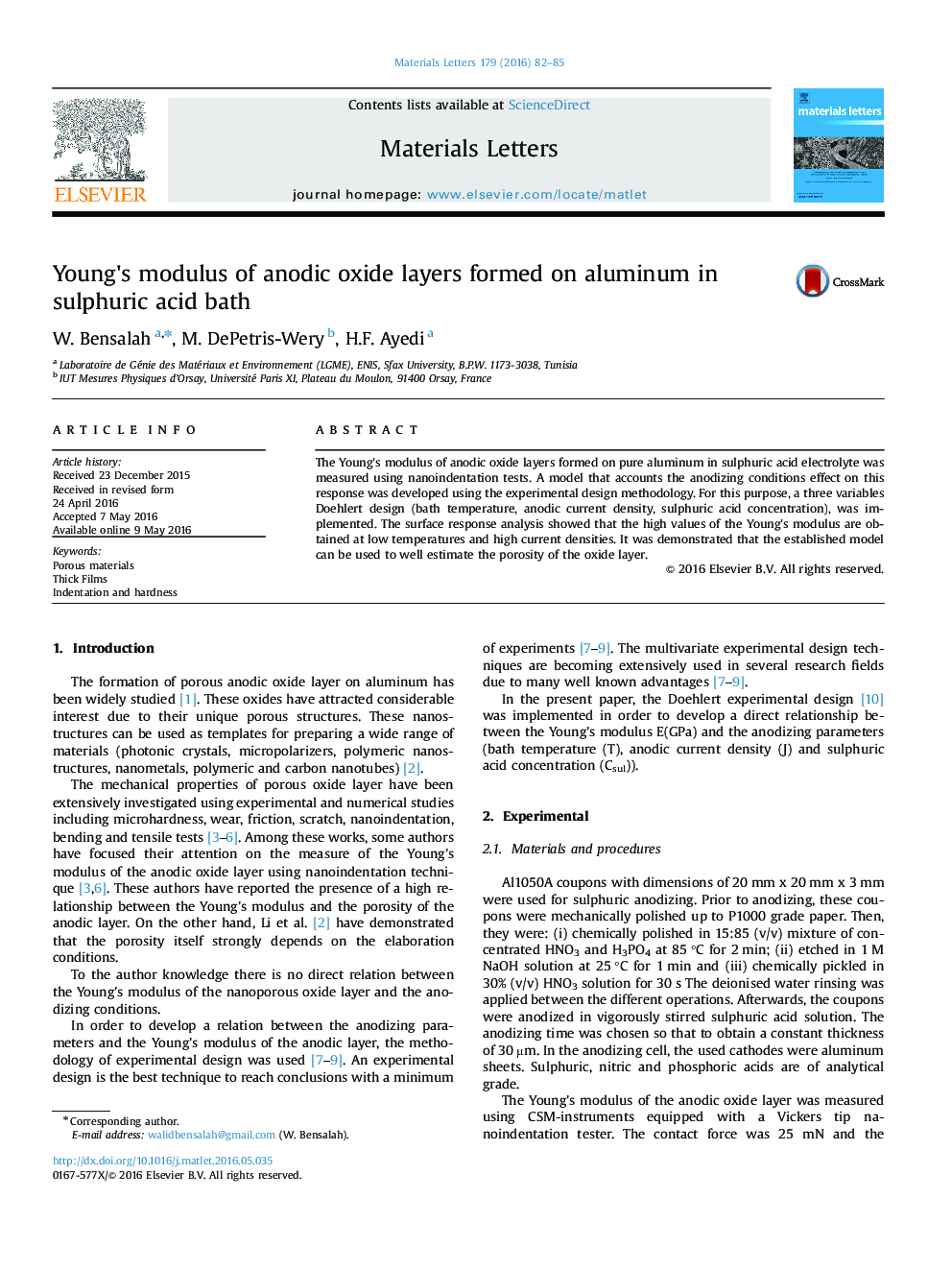| Article ID | Journal | Published Year | Pages | File Type |
|---|---|---|---|---|
| 1641196 | Materials Letters | 2016 | 4 Pages |
•Young's modulus of aluminum oxide was measured using nanoindentation.•Doehlert experimental design was applied to establish the Young's modulus model.•The Young's modulus was well related to the aluminum oxide porosity.
The Young's modulus of anodic oxide layers formed on pure aluminum in sulphuric acid electrolyte was measured using nanoindentation tests. A model that accounts the anodizing conditions effect on this response was developed using the experimental design methodology. For this purpose, a three variables Doehlert design (bath temperature, anodic current density, sulphuric acid concentration), was implemented. The surface response analysis showed that the high values of the Young's modulus are obtained at low temperatures and high current densities. It was demonstrated that the established model can be used to well estimate the porosity of the oxide layer.
